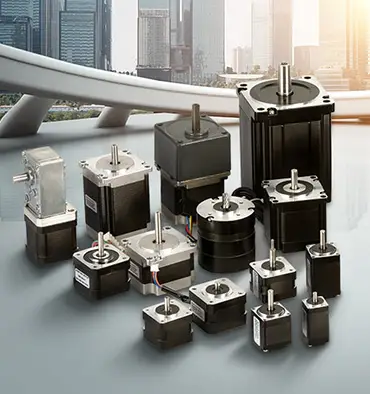Do stepper motors have brushes?
The question of whether stepper motors have brushes is an important one, as it can have a significant impact on the performance and reliability of the motor. In this article, we will provide a detailed explanation of how stepper motors work, and whether they have brushes. We will also discuss the advantages and disadvantages of using brushes in stepper motors, and why they may or may not be used in different types of stepper motors.
What is a Stepper Motor?
A stepper motor is an electric motor that rotates in discrete steps, or increments, rather than continuously. This makes it ideal for applications where precise control of the motor's position is necessary, such as in printers, scanners, and other types of precision machinery.
Stepper motors are different from other types of motors in that they have a fixed number of steps per revolution. This means that the motor can only rotate in discrete steps, rather than continuously. For example, a stepper motor with 200 steps per revolution will rotate in 200 equal steps, each corresponding to a 1.8 degree increment of rotation.
Do Stepper Motors Have Brushes?
Now that we have a basic understanding of how stepper motors work, we can answer the question of whether they have brushes. The short answer is that some stepper motors have brushes, but not all of them do.
There are two main types of stepper motors: brushless and brushed. Brushless stepper motors do not have brushes, and instead use electronic commutation to control the movement of the motor. Brushed stepper motors, on the other hand, do have brushes, which are used to transfer electrical current to the motor's rotor.
The type of stepper motor used in a particular application will depend on a number of factors, including the application's requirements for speed, precision, and reliability. Brushless stepper motors are generally more efficient and reliable than brushed stepper motors, but they can be more expensive and difficult to control.
Advantages of Using Brushes in Stepper Motors
Despite these challenges, there are some advantages to using brushes in stepper motors . Some of the main advantages of using brushes in stepper motors include:
- Cost: Brushes are a relatively simple and inexpensive component, which makes them an attractive option for stepper motors that do not require high levels of precision or reliability.
- Reliability: Brushes are a well-established technology, and have been used in electric motors for many years. As a result, they are generally considered to be reliable and durable.
Disadvantages of Using Brushes in Stepper Motors
Despite these advantages, there are also some significant disadvantages to using brushes in stepper motors. Some of the main disadvantages of using brushes in stepper motors include:
- Efficiency: Brushes can cause electrical losses, which can reduce the efficiency of the motor. This can result in reduced performance and increased energy consumption.
- Maintenance: Brushes can wear out over time, and will need to be replaced periodically in order to maintain the performance of the motor. This can increase the cost of owning and operating a stepper motor.
- Precision: Brushes can cause electrical noise, which can interfere with the control signals that are used to control the movement of the motor. This can reduce the precision of the motor, and make it more difficult to use in applications that require high levels of accuracy.
Conclusion
In conclusion, some stepper motors have brushes, while others do not.


Leave a Reply